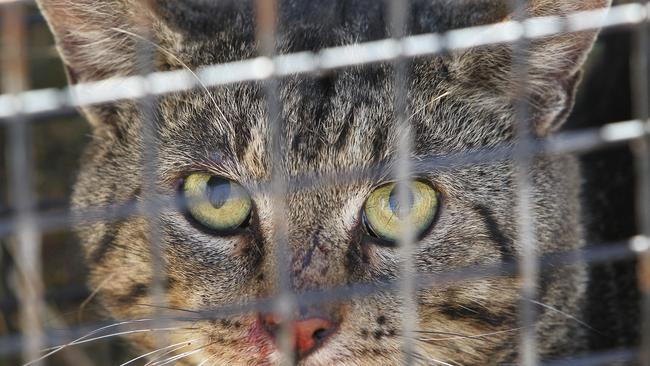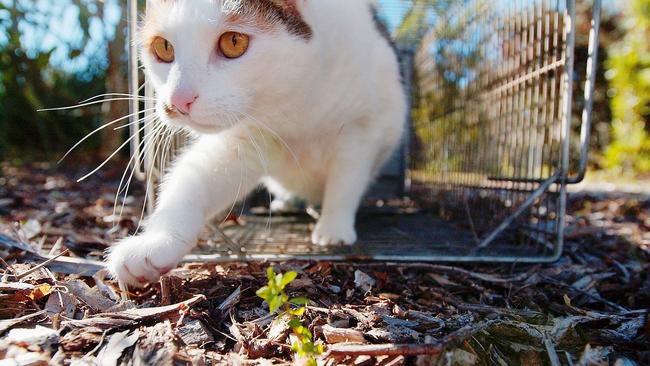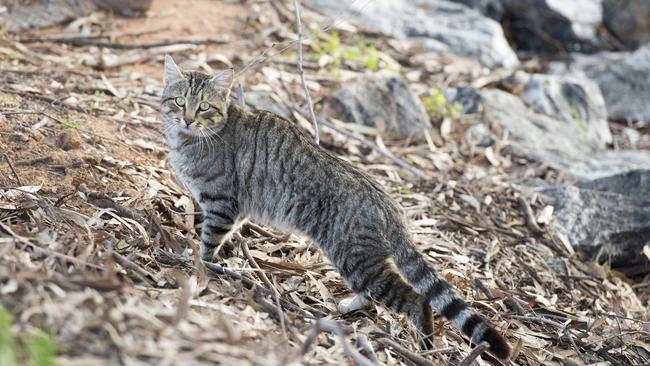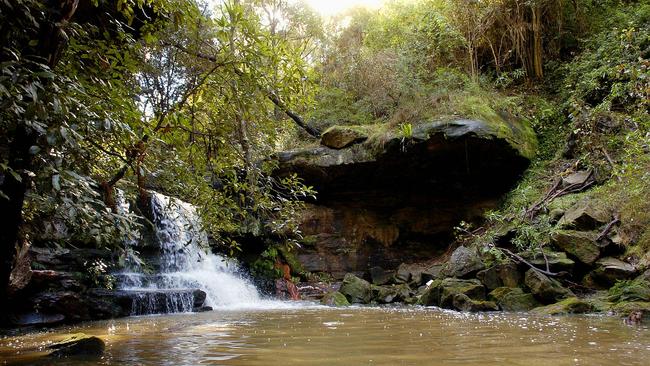Lane Cove Council’s cats crackdown: Residents have their say on contentious trapping plan
Cat owners, animal advocates and university professors have weighed in on a council plan to outlaw cats from all bushland areas. Have your say in our poll.

North Shore
Don't miss out on the headlines from North Shore. Followed categories will be added to My News.
Claws have come out over plan to begin trapping cats in Lane Cove bushland in a move council hopes will provide a lifeline to native species.
Cat owners, animal advocates and university professors have weighed in on a Lane Cove Council proposal to reclassify local bushland as ‘wildlife protection zones’ in a move which would effectively outlaw cats from all bushland areas.
The plan is designed to address the impact of introduced predators – including cats – on native animals.
The trapping plan has been welcomed by local environmental groups, but also attracted criticism from cat owners.
Under NSW Government legislation, cats are currently permitted to roam into bushland, however are banned from wildlife protection areas.

The reclassification of bushland to wildlife protection zones would enable council staff to begin “strategic trapping programs” that would specifically target felines.
The plan would also include an education program to make sure cat owners were aware of the requirements and responsibilities of ensuring their cats do not venture in bushland.

A council report stated a 2020 study found domestic and feral animals have been recorded to prey on native animals in local bushland reserves.
“The predation of native wildlife by cats can have serious implications for the viability of native species, particularly small birds and reptiles in urban bushland,” the report added.
The move has sparked opposition from some local cat owners including Anita Thommesen.
“I’m a cat owner and I don’t think anyone would want their cat injured in a cat trap when they don’t need to be,” Ms Thommesen said.

Similar concerns have been raised by Jacquie Rand – a University of Queensland professor and a director of the Australian Pet Welfare Foundation – who believes trapping cats could cause increased risks to native wildlife.
“Research shows low level removal of cats can have an increased impact to native wildlife because of the increase of other predators such as introduced black rats,” she said.
“In Sydney bushland, it was found that the more cats there are, the less raiding of birds’ nests occurred.”
Ms Rand suggested alternative measures such as “barriers” around bushland, promoting cat owners to desex cats or bedtime feeding of cats to encourage them to stay at home should be considered instead.
Shauna Forrest – a member of the Lane Cove Bushland and Conservation Society – has welcomed the council measures.
Ms Forrest said the trapping program would bring Lane Cove in line with other north shore councils including North Sydney, Ku-ring-gai and Willoughby which have endorsed wildlife protection zones for local bushland.
“Australia leads the world in the rate of animal extinction and the combined impacts of domestic feral and roaming of cats are said to have already helped push native animals into extinction,” she said.
“All neighbouring councils have introduced wildlife protection zones and Lane Cove should immediately fall into line with our neighbours.”
A Lane Cove Council report stated “it is intended” that any cat caught in traps would be reunited with their owners.
Dogs would still be able to be exercised in bushland, provided owners keep them on a leash.
The proposal will be open for public feedback before a final decision is made.





